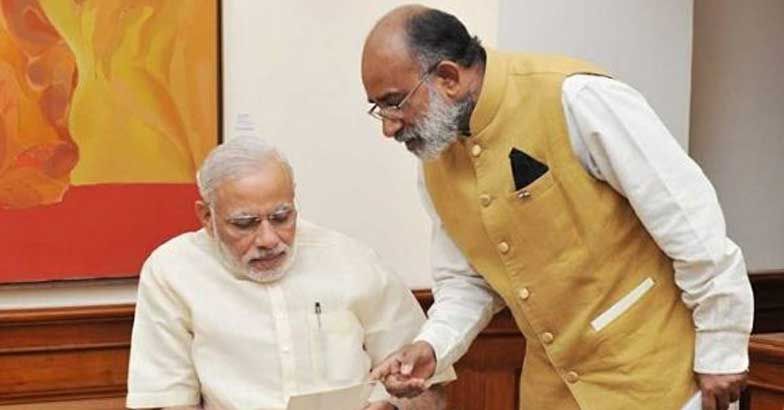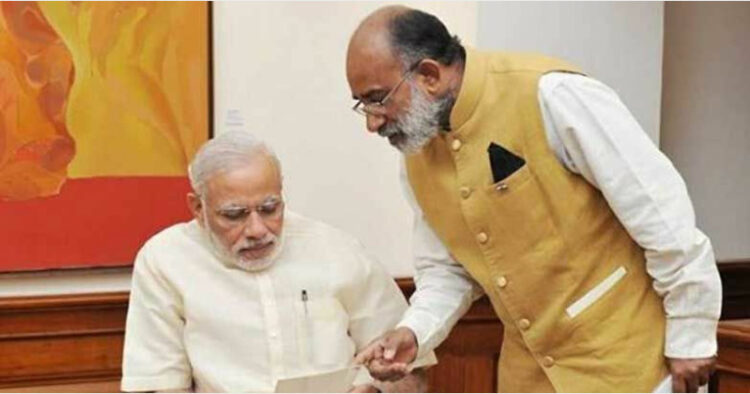
Alphons Kannanthanam
Modi government’s second term which started on May 30, 2019, has to be seen essentially as a continuation of the first five-year tenure, beginning in 2014.
There was the apprehension before Modi came to power that BJP government would be a pro-rich and pro-business since it was perceived that a large segment of BJP supporters were businessmen, who were considered to be right of centre in economic policy. But to everyone’s surprise, the focus of the Modi government in the first term has been hugely pro-poor. The bulk of government expenditure went to providing basic facilities for the poor. No government in the history of the world had done so much for the poor in such a short time. Let me recall some of these phenomenal achievements:
- Built over 10.5 crore toilets for the poor. When Modi came to power only 38% of people had access to toilets. Today over 99 % have access to toilets. WHO and all other reputed world organizations have haled this as one of the biggest revolutions in the history of the world. We have saved the lives of millions of children through hygiene which comes with toilets. It has given dignity to woman and girls.
- Provided over Rs 8.5 crore free LPG connections. This has saved the lives of lakhs of women who were dying of cancer, breathing toxic fumes in the kitchen.
- Provided free electricity connection to all the poor in the country.
- Will be providing houses for all the poor by 2022. 1.12 crore houses have been approved and are in various stages of construction in urban areas. 2.95 crore houses are being built in rural areas and the government is on target to achieve the goal by 2022.
- Accident insurance for Rs 2 lakhs at a premium of Rs 12 per year. 15.47 crore people have enrolled in this scheme.
- Life insurance for Rs 2 lakhs at a premium of Rs. 330 per year. Six crore people have enrolled in this scheme.
- Under Ayushman Bharat scheme, free treatment up to Rs. 5 lakhs in all the reputed hospitals in the country. Total number of patients treated crossed one crore mark in May this year.
- Under PM Kissan Samman program every farmer in the country has got an annual Direct Transfer of Rs 6000 as cash.
- Under the Udan scheme, the poor have been enabled to fly by air at a nominal fare. Over a million people have taken a flight under the scheme.
- Minimum price support was provided to 22 crops and an unprecedented quantity of food grains procured from the farmers. This has ensured sure price to the farmer and also ensured that we have enough stock when Covid hit us.
The biggest achievement of the Modi government has been the elimination of corruption. He said: “I will not eat your money, and will not allow anybody else to eat your money”. In a country that was rated as one of the most corrupt countries in the world, he wiped out corruption from Delhi in months. It is a miracle.
Money spent by successive governments never reached people. In fact, former Prime Minister Rajiv Gandhi said that for every rupee spend only 16 paisa reaches people. Therefore, Prime Minister Modi decided that money will be transferred directly to the accounts of people. 36 crore Jan Dhan bank accounts were opened and Rs. 953225 lakh crores transferred to their accounts till May 2020. Year-wise breakup of DBT is given below:
2014-15 ……….38926
2015-16……….61943
2016-17……….74689
2017-18……….190871
2018-19……….329796
2019-20……….204394
2020-21(up to April)……….52606.
GRANT TOTAL: Rs 953225 crores
Number of beneficiaries: 525 crores.
During Covid, Rs 52606 crore has been transferred directly to the accounts of the poor, the farmers, widows, senior citizens and destitute. Over and above this, 80 lakh tons of food grains have been given to the states to be distributed among the poor, benefitting 70 crore people. 3.15 lakh tons of pulses have also been given. During this period, 5.87 crores of free LPG refills were given.
Government is implementing a stimulus package of Rs. 20 lakh crores to deal with corona. Of this Rs. 3.93 lakh crores is earmarked for farmers, taking care of every segment of agriculture, including the creation of a massive infrastructure in the agricultural sector. Existing legislation is being amended to give farmers greater access to markets. Rs. 4.54 lakh crores is earmarked for small industries sector (MSME) with no collateral, which provides the bulk of employment in India. RBI has brought down interest rates to all-time low and has increased liquidity dramatically by 8.1 lakh crores so that existing business can restart and new startups can access capital. Prime Minister Modi has said that this is a great opportunity for India to be a self-reliant country. The government has set the tone for India to be a manufacturing hub for the world. Great opportunities exist with many countries wanting to quit China. Under Modi, India has moved up over 75 positions in Ease of Doing Business. It is now for States like Kerala to capitalize on that. But for that to happen the work culture in Kerala has to change. The political culture has to change. With a large exodus of Keralites from the Gulf back home, two things are going to happen: 1. Foreign remittance on which Kerala survived for decades is going to stop. 2. Lakhs of hard-working and talented foreign returned Malayalees are going to be home, with very little opportunities existing in Kerala as we don’t encourage entrepreneurship. But it is a great opportunity with such a large pool of talents waiting to be utilised.
Kerala has been arguing that borrowing limits of States should be increased from 3 to 5% of GSDP. As part of the stimulus package, the government of India has done that, with certain conditions, which are absolutely rational. Kerala can borrow an additional Rs. 18000 crores. Even prior to this increase, under Article 293 of the Constitution of India, Kerala had enacted legislation to permit the State to stand guarantee for loans. Kerala has already borrowed over Rs. 26000 crores under this provision. Borrowing is not a sin provided; it is used for productive purposes with monetary returns which will ensure that repayment can be honoured. Is Kerala using borrowed money for productive purposes? If so, what is the rate of return on the money borrowed so far?
Guess what is the debt–GSDP ratio of Kerala? 30.1%, according to the Budget document 20-21. It is only 24% average for all Indian States. Let us not burden our future generations with an unproductive debt burden.
We are all aware of the Chinese incursions into disputed territory, of late. Modi government is very clear about the defence of the country. 1962 was such a shame. Under the UPA government, the defence infrastructure crumbled with zero modernisation. Even the basics were ignoring. Modi government took a decision six years back to modernise the armed forces. We know who the enemy is. We know who is fighting proxy wars. Our defence infrastructure on the China border was so pathetic. Modi government decided to build adequate infrastructure on the entire 3488 km stretch on the line of control. Seventy-three strategic roads are being built, totalling 4643 km, along the line of control; 35 of these, 3417 km in length, have been completed; 11 more are targeted for completion in 2020. We have upgraded forward air bases and advanced landing grounds. C-17 Globemaster III and C-130J Super Hercules have landed in these advanced landing grounds. It is also proposed to construct 14 strategic railway lines on China and Pakistan borders. We mean business as far as the defence of the country is concerned.
It has been six years of spectacular gains for country. Unfortunately, Covid stuck the world. The world is going into recession. Nobody knows where the world is heading to. In this season of pandemic, Modi has shown remarkable leadership in fighting Covid. He has been decisive. He has got all the Sates on board in this epic battle through the consultative process. David Nabaro, the WHO Covid Ambassador, complimented Modi government for the way the government has dealt with the pandemic.
(The writer is Member of Parliament, BJP)













Comments